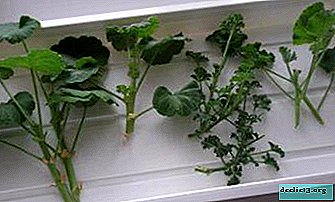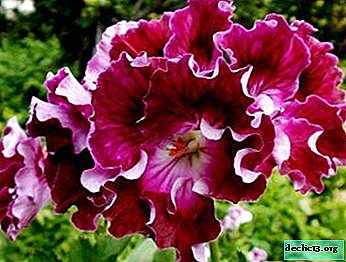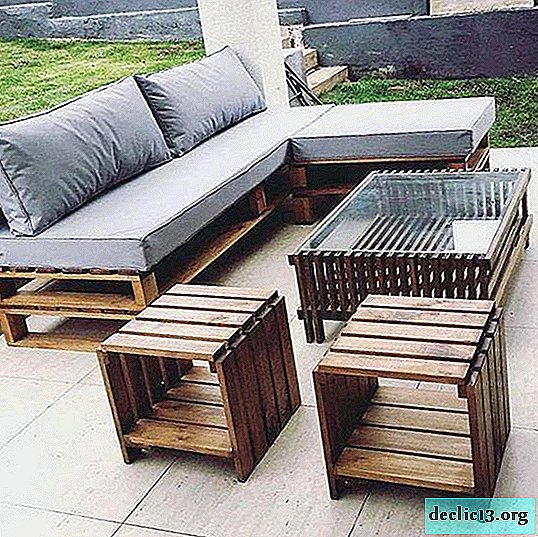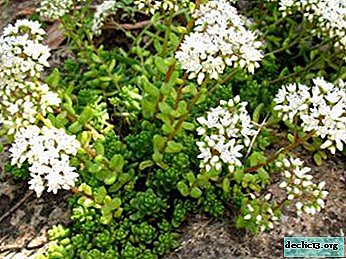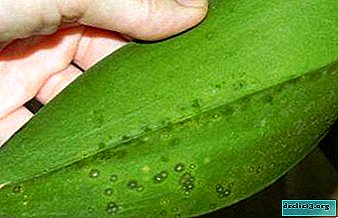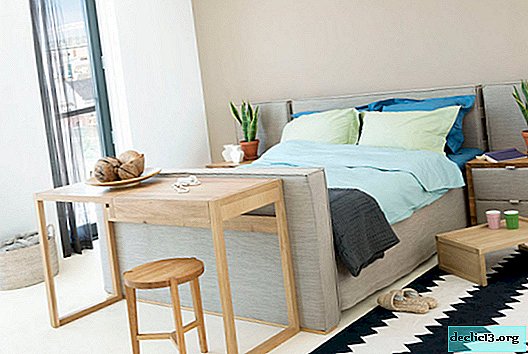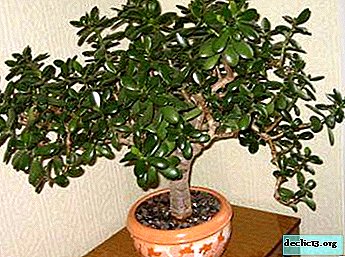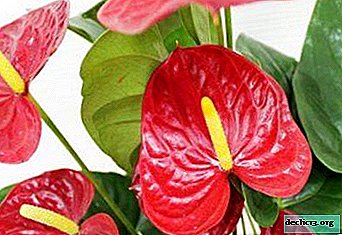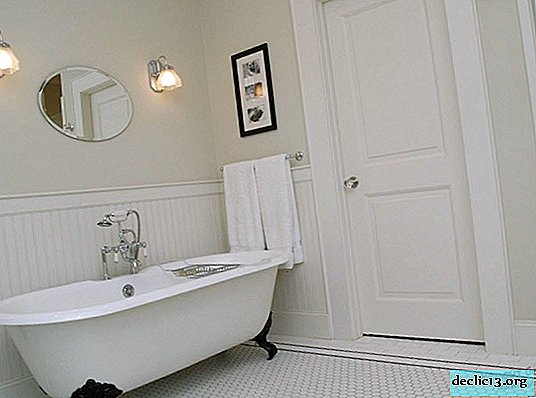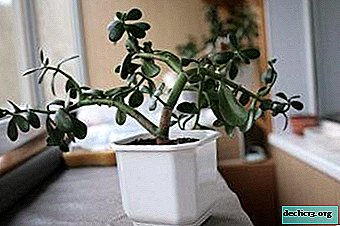Decoration of country houses and summer cottages - cascading petunia
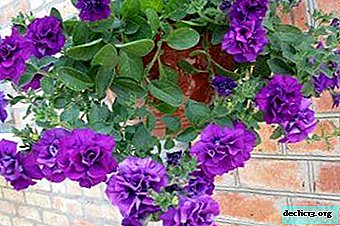
Cascading petunia is an ornamental plant that can be found today in almost every grower in the garden. And such popularity is justified, because the plant is distinguished by lush and long flowering, a wide palette of shades.
This allows you to create a unique landscape design. And the simplicity in the care of these flowers allows even novice growers to engage in their cultivation.
What it is?
Cascading petunia was imported to Russia from South America in the 18th century. And although there are various climatic conditions, the plant feels great on the territory of Russia. In countries such as Brazil, Paraguay, Argentina, petunia can grow to 10 meters.
Cascading petunias are characterized by elastic shoots, the length of which can reach 1.5 m. Moreover, they are not afraid of any wind, since they never break. The growth of green mass occurs due to axillary shoots. At first they rise up, and when they reach a certain length, they hang down.
Reference! The bush itself resembles a ball with long hanging lashes. It is best to plant the plant in a hanging pot. The buds are large, 5 cm in diameter. Moreover, on one bush they are all of equal size.Description and photo of varieties
Next, you can find a photo and a brief description of the main varieties of cascading petunia.
Gioconda

Gioconda is a representative of hybrid varieties that was obtained recently. Gioconda strikes with a large number of inflorescences, which distinguishes it from all other varieties of cascading petunias. There are no male flowers on the bushes, so the plant does not spend energy on seeds, as a result of which flowering can last a whole year.
Flowers are formed early, so the Mona Lisa is one of the most beloved varieties among gardeners. In addition to decorative properties, this flower is durable and can withstand minor subzero temperatures. The length of the shoots reaches 1 m.
Ramblin

This is another popular cascading petunia variety. Its popularity is due to early flowering and unpretentiousness in terms of care. Ramblin variety is perfect for use in landscape design. After all, with proper care, he shoots up to 1 m. Thus, you can create beautiful and original floral arrangements. Ramblin loves moisture, good light. Under these conditions, the variety will delight its owners with beautiful flowers for a long time.
Super cascade

The Niagara variety belongs to supercascade petunias. During flowering, it forms a waterfall from bright green leaves and voluminous beautiful flowers. The diameter of the inflorescence is 8 cm, and the length of the shoots is 1.5 m.
Double cascade

This variety forms flowers quite early. The size of the inflorescences reaches 13 cm, and the length of the shoots is 39-40 cm. Double Cascade requires constant feeding and watering.
Its flowers resemble a carnation in shape, which makes the bush even more attractive. A variety is grown in boxes and in flowerbeds near a country house.
Where and how to plant her?
The process of planting a cascading petunia is simple, it requires compliance with certain rules:
- For planting, use only high-quality and viable seeds. It is better to buy them from trusted manufacturers.
- In addition to planting material, it is necessary to create a nutrient medium for active plant growth. Peat tablets can be used for this. These tablets already contain all the necessary substances and minerals for the full growth of the plant.
- Plant seeds in January, then the bushes will begin to bloom earlier.
- With the advent of 2 true leaves, you can pick, planting seedlings in separate cups. And at the end of April to land her in open ground.
Soil requirements
Cascade petunia needs a loose and nutritious substrate. You can cook it yourself, combining in equal proportions dry and clean sand, peat, humus.
Lighting and location
 Petunia is a very photophilous and thermophilic plant. With a lack of light, it will not bloom and may even become ill.
Petunia is a very photophilous and thermophilic plant. With a lack of light, it will not bloom and may even become ill.
So it is worth growing it in a well-lit area, where there is scattered light, and there is no direct sunlight.
When growing petunias indoors, preference should be given to windows facing the east side. When grown in a flower bed, plant in combination with other flowers to exchange light.
How to care?
Watering
Moisten the petunia is as necessary. Only irrigation water is suitable for irrigation. Pour it only under the root so that the liquid does not fall on delicate flowers. The next day after wetting, loosen the soil and weed the weeds.
Fertilizers
Young plants need regular supplements that will contain phosphorus and potassium. These components allow the plant to grow quickly and accelerate the flowering start time. As a top dressing, you can use specialized mixtures that are designed specifically for decorative bushes.
Attention! With the regular use of complex liquid fertilizers, you can get lush bushes with a huge number of flowers.Pruning
After planting the plant in open ground, you need to pinch a few leaves at the top. This will make the bush more magnificent. In addition, such events will positively affect flowering. And the removal of faded buds contributes to a new wave of bright and colorful inflorescences.
Common Diseases and Pests
If you strictly follow all the rules for caring for the plant, then petunia will not get sick. But there are situations when the leaves begin to turn yellow and dry. Then you need to adjust the care.
Of the diseases, petunia can be affected by the following fungal infections:
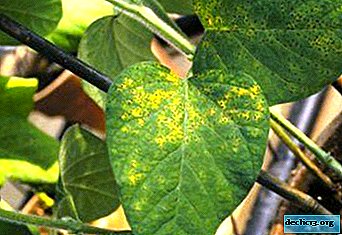 late blight;
late blight;- blackleg;
- chlorosis;
- gray rot.
Viral diseases in cascading petunias are quite rare, and if they do appear, then they have to fight radically - throw out the affected flower to save the entire plantation. If most of the flowers are affected, then measures should be taken to improve the plants.
If this does not help, then you will have to uproot the diseased stems by looking at the healthy bushes well. And after that, carry out preventive measures for healthy flowers.
Of the parasites for petunia, the danger is:
- aphid;
- thrips;
- spider mite;
- slugs.
Insecticides are used to combat them.
Propagation Features
Seed way
Planting petunia seeds is necessary in February or March. Use a special container for this. The peculiarity of growing cascading petunias is that during the first 2 weeks after sowing, the seeds should be watered every day with a spray gun. Next, increase the amount of water, and install the containers in a sunny place.
Plants germinate only at a temperature of 25 degrees. As soon as the sprouts have formed, the temperature should be 20 degrees. Watering should be done only with warm and boiled water. Feed every 4 days. As soon as 4 leaves are formed, then pick the plants in separate cups. Flowering begins on day 70-75.
Cuttings
Important! With the onset of autumn, each bush of cascading petunia should be brought into the house and a cool place should be chosen for it, pruned and grown until spring. And in the spring to make nitrogen fertilizers, and then cut the cuttings.Each seedling should have 4-5 leaves. Before planting a petunia, treat it with root and plant it in a container.
But landing is not done immediately, otherwise the cuttings will take root poorly.
Possible problems
When growing cascading petunias, the following problems are possible:
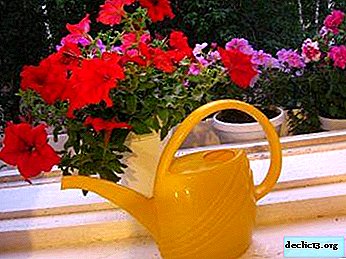 Withering and death of seedlings. As soon as the seedlings have formed, it is necessary to install them in a cool place where the temperature is 20 degrees. Do not remove them from the greenhouse before the first real leaves appear. Only after 2-3 days can you lower the daytime temperature to 15-18 degrees, and the nighttime temperature by 2 degrees less.
Withering and death of seedlings. As soon as the seedlings have formed, it is necessary to install them in a cool place where the temperature is 20 degrees. Do not remove them from the greenhouse before the first real leaves appear. Only after 2-3 days can you lower the daytime temperature to 15-18 degrees, and the nighttime temperature by 2 degrees less.- Decay of the root system. It is necessary to normalize watering, to use only the settled water. In addition, it is important to add vermiculite to the soil. It absorbs moisture perfectly, preventing root decay.
- It is necessary to teach seedlings to the bright sun gradually, otherwise it is fraught with the appearance of a burn. Since April, when the air temperature will be 10-15 degrees, you can take a flower to the balcony for hardening.
It’s easy to care for cascading petunias if you know all the nuances of its growing.
This plant can not be attributed to capricious, as it is rarely sick, abundantly and luxuriantly blooms and not demanding. Enough to make a minimum of effort, in response to all efforts to get a bright, colorful and long flowering of this amazing culture.

 late blight;
late blight; Withering and death of seedlings. As soon as the seedlings have formed, it is necessary to install them in a cool place where the temperature is 20 degrees. Do not remove them from the greenhouse before the first real leaves appear. Only after 2-3 days can you lower the daytime temperature to 15-18 degrees, and the nighttime temperature by 2 degrees less.
Withering and death of seedlings. As soon as the seedlings have formed, it is necessary to install them in a cool place where the temperature is 20 degrees. Do not remove them from the greenhouse before the first real leaves appear. Only after 2-3 days can you lower the daytime temperature to 15-18 degrees, and the nighttime temperature by 2 degrees less.